Introduction
Selecting the appropriate trench digger for your excavation project is a critical decision that can significantly enhance productivity and efficiency. With the advent of sustainable practices in the construction industry, opting for trenchers that align with eco-friendly standards is not just beneficial for the environment but also for the longevity of the equipment. When choosing a trencher, one should consider factors like compatibility with renewable diesel options and the value and long-term benefits of the rental.
By harnessing the power of data and comparing different trencher models, you can find the one that best suits your project's needs. In an age where technological innovation is paramount, selecting a trench digger that reflects continuous improvement, efficiency, and sustainability will not only meet your project's needs but also contribute to a greener construction industry.
Types of Trenchers for Rent
Choosing the suitable tool for your excavation is a crucial choice that can greatly improve productivity and efficiency. With the advent of sustainable practices in the construction industry, opting for trenchers that align with eco-friendly standards is not just beneficial for the environment but also for the longevity of the equipment. For instance, JCB's commitment to building fuel-efficient diesel engines since 2004, with a focus on reducing harmful emissions, has set an industry standard for sustainability. When choosing a trencher, one should consider the compatibility with Hydrotreated Vegetable Oil (HVO) — a renewable diesel option that reduces carbon footprint without compromising on performance.
Furthermore, LECTURA's web-based appraisal tools provide invaluable insights into fair market values and price-performance ratios of various trencher models. These tools take into account factors such as country of operation, working hours, and machine specifics, allowing you to make an informed decision based on precise data. Whether you're overseeing a small-scale undertaking or a large construction site, comprehending the significance and long-term advantages of your excavation equipment rental can result in more economical solutions.
By harnessing the power of data, you can compare different trencher models and their capabilities to find the one that best suits the job's requirements. In a time when technological advancement is crucial, choosing an excavation machine that embodies ongoing enhancement, effectiveness, and eco-friendliness will not just fulfill the requirements of your undertaking but also support a more environmentally friendly building sector.

Factors to Consider When Renting a Trencher
Selecting the suitable excavation equipment for your construction project is more than simply renting it; it's about guaranteeing smooth excavation and maximum efficiency. It's essential to weigh your options carefully. Consider the local demand and specifics of your project—just as you would analyze the dump truck market before starting such a business. Consider the nature of the soil, depth and width of the excavations, and the overall magnitude of the task. It's akin to the detailed approach farmers take when researching and comparing machinery, assessing aspects like compatibility and operational efficiency.
Furthermore, keep in mind the total cost of ownership. A trench digger's price tag extends beyond the rental fee, encompassing maintenance, fuel, and potential downtime costs. This is comparable to the all-inclusive budgeting necessary in farm machinery investments, where maintenance and repair are considered in the financial planning. In the realm of excavation rental, the smartest financial move may parallel the decision-making process in the housing market, where the choice between renting and buying hinges on multiple financial and situational factors.
In your calculation, don't overlook the role of suppliers. Similar to the importance of farm machinery providers to the agricultural sector, the appropriate trench digger supplier can provide valuable support, machinery expertise, and after-rental services.
Lastly, keep in mind that the choice to lease machinery can be impacted by external economic factors, such as the recent increase in population driving demand in the housing market, or interest rate hikes influencing buyer decisions. These broader economic trends can also impact equipment availability and rental costs. Therefore, when selecting an excavation machine, adopt a comprehensive perspective, taking into account both immediate requirements of the task and the broader economic context.
Project Size: Matching Trencher Size to Project Needs
Choosing the appropriate trench digger for your excavation endeavor is not only about completing the task, but accomplishing it efficiently and cost-effectively. For compact jobs, such as garden line installations or minor plumbing repairs, a walk-behind trencher provides the convenience and maneuverability required. On the other hand, substantial undertakings like foundation digging or extensive landscape grading necessitate a ride-on trencher. These larger units deliver the power and durability needed for tough terrains and prolonged use. From time to time, undertakings may be so extensive or specialized that a trencher attachment for heavy machinery is the best fit. This decision is akin to finding the perfect balance in team size for optimal performance—as research suggests, there's a "Goldilocks" zone where the equipment size is just right, avoiding inefficiencies and inflated costs. By thoroughly evaluating the size and details of your undertaking, you can guarantee that you lease the excavation device that corresponds to your efficiency objectives and financial limitations.
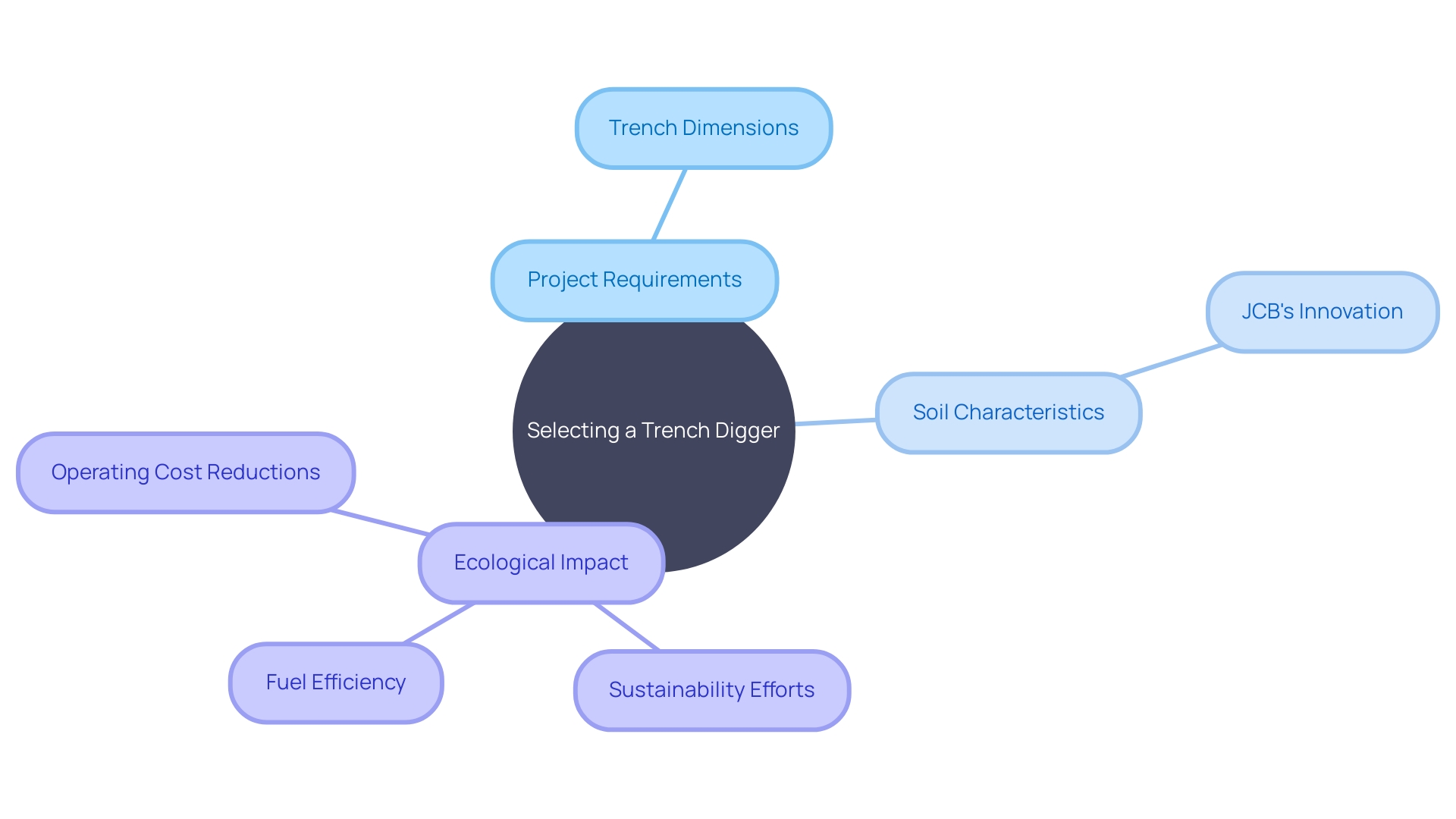
Trench Depth and Width: Choosing the Right Trencher for Your Project
Selecting the ideal excavation tool necessitates thoughtful evaluation of your project's particular digging requirements. Excavation tools are available in different styles, each specifically designed to manage specific excavation dimensions. For instance, tunnel boring machines (TBMs) and roadheaders are two distinct types of tools utilized for tunnel excavation. TBMs are designed to engage with the entire face of the tunnel, making them suitable for large-scale, consistent trenching tasks. In contrast, roadheaders are equipped with a smaller cutting head, ideal for more precise or smaller-scale operations. The choice between these two options, similar to deciding between various excavation tools, depends on whether you're digging through soft ground or rock, as each machine performs well in different conditions. Ground stability and the need for fuel-efficient, low-emission operation are also critical factors influencing your choice, aligning with the industry's push towards sustainability. By selecting the appropriate tools for your specific needs, you can improve the efficiency of excavation and minimize the necessity for manual involvement, ultimately making a valuable contribution to a more efficient and environmentally friendly excavation procedure.
Soil Type: Selecting Trenchers Based on Soil Conditions
Choosing the right trench digger necessitates a thorough comprehension of the soil you'll be dealing with. For instance, softer soils might call for a trencher that's light and agile, while harder, compacted soils demand a more robust machine equipped with features designed to break through tough surfaces. Soil scientists have devised taxonomic groups for soil, based on characteristics like physical composition and nutrient content, which can be a useful guide in choosing the right equipment. Furthermore, it's important to consider the long-term impact on soil quality. Intensive digging can affect soil structure, potentially impacting its resistance to erosion and its ability to retain nutrients and organic matter. To ensure sustainability and efficiency, it's not only about what occurs above the surface. The interaction between plant roots and soil microorganisms can significantly alter the soil's nutrient profile, which in turn affects the choice of machinery. For example, the presence of arbuscular mycorrhizal fungi (AMF) in the soil can indicate a more symbiotic and less disruptive excavation approach. Ultimately, the goal is to enhance excavation productivity without compromising the soil's long-term health and productivity, which aligns with the agriculture technology industry's move towards sustainability, as seen in recent partnerships aimed at delivering profitable and efficient solutions.
Maneuverability: Choosing Trenchers for Different Worksite Conditions
Selecting the appropriate excavation equipment for a job necessitates thoughtful evaluation of the location-specific circumstances. For complex projects like CNP Vita Assicura's new headquarters, where functionality and design efficiency are paramount, choosing the appropriate tools that align with the project's maneuverability challenges is crucial. The surrounding environment may feature narrow access points or uneven terrain, necessitating a trench digger that can navigate such obstacles effectively. Project success, as highlighted in the construction work of Obayashi JV, is dependent on minimizing downtime and ensuring a steady work pace, akin to smooth traffic flow. This approach is vital in a construction industry facing cautious investment, as reported by Glenigan's UK Construction Industry Forecast, where the maximization of excavation productivity is not just beneficial but necessary to sustain growth. Therefore, in line with the forecasted 15% growth over the next two years, prioritizing maneuverability in equipment selection is a proactive step towards achieving efficient and productive excavation outcomes.
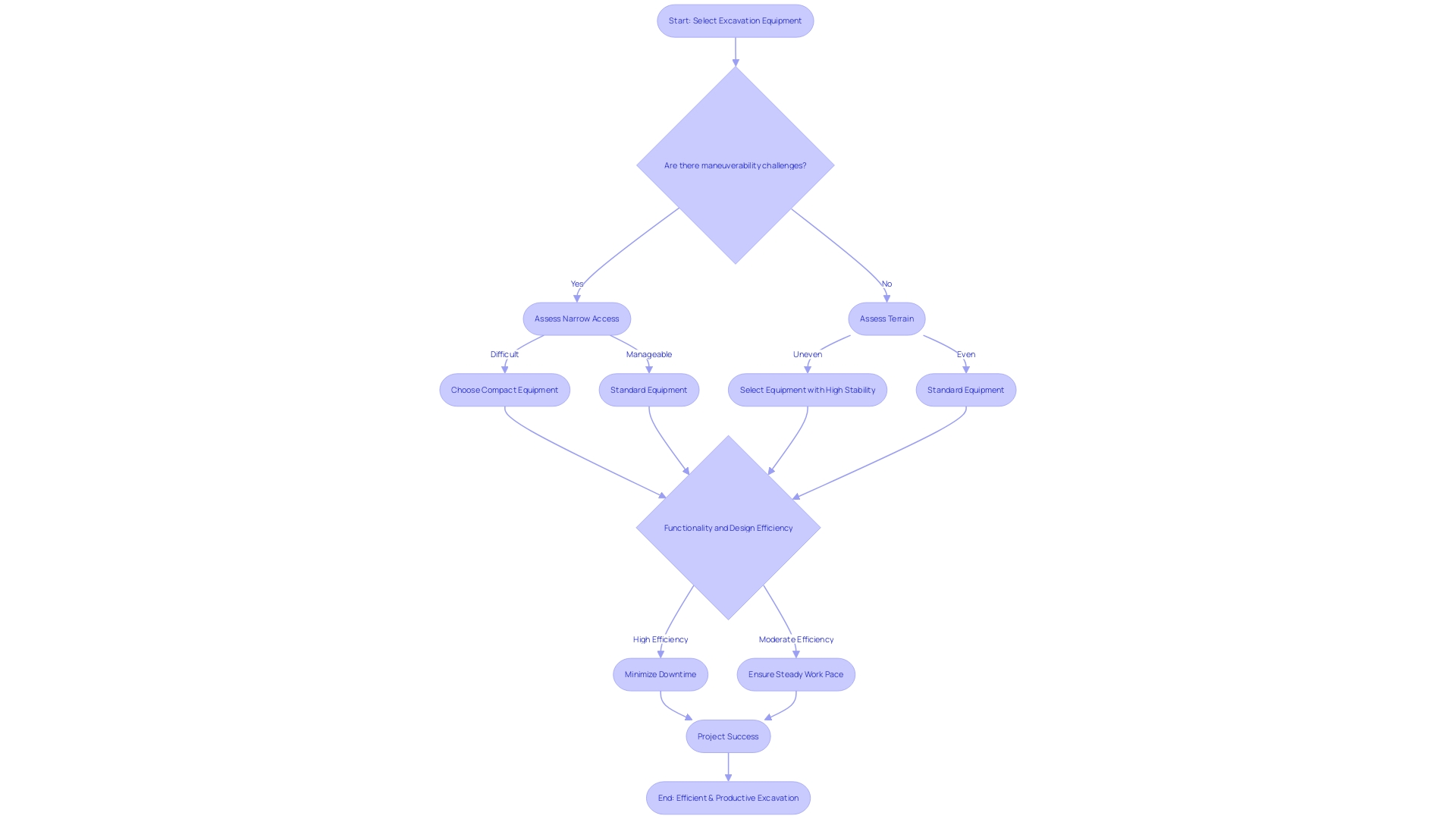
Preparation and Safety for Trenching Projects
When undertaking a trenching endeavor, it's not only about the equipment; it's about guaranteeing the appropriate protocols are in place for a secure and efficient operation. For example, the delicate geography of the Himalayas, as highlighted by environmentalist Anil P Joshi, demands careful consideration of geological features and the implications of climate change. Likewise, construction endeavors in areas such as Uttarakhand, which is undergoing a construction surge despite being an environmentally vulnerable zone, emphasize the need for comprehensive groundwork.
Take into account the instance of the Société du Grand Paris's recent endeavor, which necessitated stringent compliance with safety protocols, including continuous monitoring of workers to prevent hazardous behaviors. This illustrates the vital role of the construction manager in enforcing safety measures and ensuring compliance.
Moreover, recent catastrophic events, like the collapse of the Silkyara tunnel in Uttarakhand, demonstrate the dire consequences of inadequate safety practices. Such incidents highlight the importance of rigorous planning and risk mitigation, areas where companies like Jacobs have provided expertise, developing operational contingency plans that enhance safety.
These examples serve as a reminder that trenching and excavation work necessitates a multifaceted approach, incorporating safety management, compliance, and environment-conscious practices. By focusing on these aspects, construction managers can better safeguard workers and the surrounding communities, ensuring that trench digging is not only efficient but also secure and responsible.
Checking for Underground Utilities
Before initiating any digging activities, accurately identifying and locating underground utilities is essential for protecting these critical infrastructures and ensuring worker safety. The complexity of underground environments, with a mix of metal and nonmetal pipes, conduits, and communication cables, demands precise and advanced detection methods. The advent of technologies such as GPS and GNSS has significantly improved the accuracy of locating these subsurface utilities. A notable innovation in this field is the RD8200SG, a survey-grade precision utility locator developed by Radiodetection, which incorporates Point One Navigation’s Polaris technology. This cutting-edge tool enables utility workers and contractors to achieve survey-grade accuracy when monitoring underground assets, which is particularly crucial in industries like oil and gas where the risks of striking a pipeline are high and can have dire consequences.
The use of ground penetrating radar (GPR), a nondestructive method, has also become widespread in subsurface utility mapping to aid endeavors like horizontal directional drilling (HDD). GPR's advantages, such as its portability, cost-effectiveness, and versatility, are somewhat offset by the expertise required for data interpretation. To overcome this, recent advancements have seen the application of machine learning algorithms to GPR data, automating the detection of underground objects and enhancing the efficiency of subsurface mapping.
These technological advancements are shaping the future of excavation and drilling endeavors, making them safer and more reliable. As we continue to innovate, we must also remain vigilant and respectful of the historical and cultural significance buried beneath our feet, as evidenced by recent discoveries of ancient remains and messages left by past societies, reminding us of the delicate balance between modern infrastructure development and preserving our heritage.
Planning the Trench Path
Effective digging starts with careful route mapping to guarantee the endeavor progresses seamlessly. Take into account the desired position of the excavation, avoid any possible obstacles, and map out the shortest and easiest path. By doing so, not only will you minimize extraneous digging, but you'll also boost productivity. This approach mirrors the insights gathered from industry experts, who emphasize the importance of streamlined processes for a constant workflow, much like a well-designed traffic system that avoids congestion and red lights, allowing for a steady pace and timely project completion. As construction demands rise globally, spurred by housing shortages and the need to upgrade infrastructure, the focus on efficient excavation becomes increasingly crucial. With the construction sector contributing to 13% of the global GDP, advancements such as robotics are now being leveraged to improve labor productivity and address safety and fatigue in the challenging construction environment. In fact, with the anticipated growth in construction output, despite economic challenges, as forecasted by Glenigan for the UK industry, adopting such efficient methods is not just a matter of productivity, but also of sustainability, as construction looks to reduce its ecological footprint, with concrete alone being a significant contributor to CO2 emissions and construction waste. Therefore, a well-planned trench route is not only a step towards operational efficiency but also aligns with the broader industry goals of sustainable and responsible construction practices.

Establishing a Safe Working Area
In the realm of trenching and excavation, the emphasis on worker safety is paramount. To safeguard the well-being of all personnel, adherence to stringent safety measures is not just recommended, but mandated by regulatory bodies. For instance, OSHA's Construction Standard 1926.1208(a) delineates the role of an 'authorized entrant' – an employee granted permission by their employer to enter a confined space. This individual must be versed in the potential hazards, adept in using required equipment, and prepared to execute an emergency exit if necessary. Similarly, the 'attendant' plays a crucial role, monitoring entrants and ensuring communication lines remain open to facilitate an effective emergency response.
Real-world cases underscore the significance of such protocols. Consider, for example, the Grand Paris Express endeavor, where strict safety regulations were imposed to limit access to authorized personnel only, with live monitoring to prevent unsafe behaviors in the extensive tunneling work. In another instance, a compressed air system audit at a mine revealed excessive energy consumption due to unoptimized airflow, underscoring the importance of vigilant safety and operational checks to prevent wasteful practices and potential hazards.
To foster a safer work environment, it is essential to maintain continuous airflow and monitor atmospheric conditions within confined spaces. This practice not only ensures sufficient oxygen levels but also guards against toxic or flammable conditions. Recent tragic events in the industry serve as a stark reminder of the importance of such safety measures. For example, the Queensland construction industry witnessed several fatalities, prompting a call for a comprehensive review of safety regulations to ensure that every worker has the right to a safe work environment.
Ultimately, the responsibility of creating a secure working area in trenching operations extends beyond compliance to a moral obligation to protect human life. As the industry continues to evolve, it is imperative that safety remains at the forefront of every project, supported by ongoing training, education, and a steadfast commitment to upholding the highest safety standards.
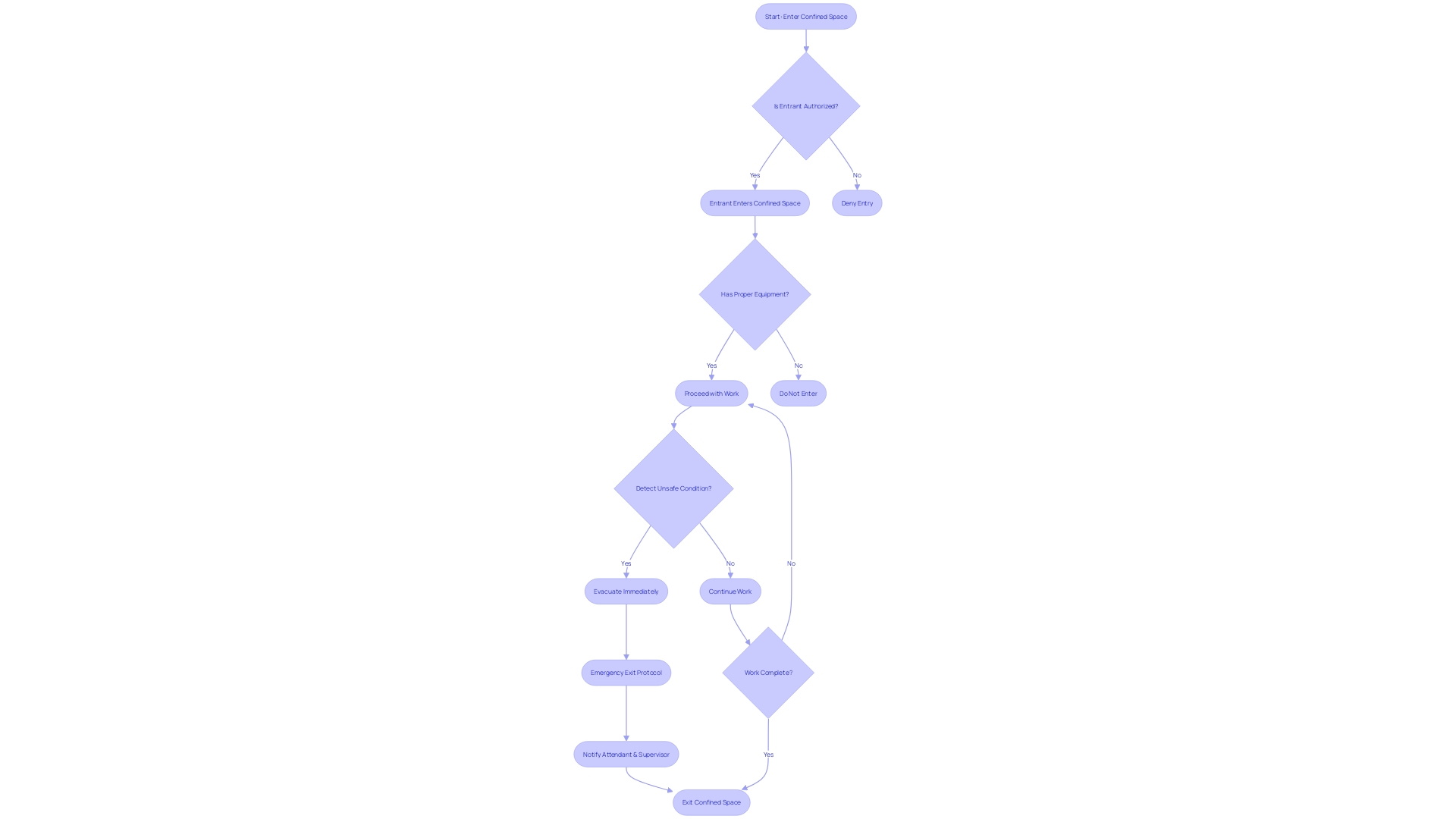
Operating Trenchers Efficiently and Safely
To improve the efficiency of digging, it's essential to operate excavation equipment with accuracy and caution. Consider the following aspects for optimal trencher operation:
- Understand the machinery: Familiarize yourself with the trench digger's capabilities and limitations to utilize its potential fully.
- Prioritize safety: Always adhere to safety protocols to prevent accidents and ensure the well-being of the crew.
- Efficiency in automation: Embrace automation to streamline operations, as seen in Europris, Norway's successful transition to an automated logistics center, which led to improved efficiency.
- Maintenance is key: Regular upkeep of the equipment is essential for reliable performance and longevity.
- Plan for the unexpected: Be prepared for unforeseen challenges by having contingency plans in place.
- Stay informed: Keep up-to-date with industry reports, such as the British Geological Survey's urban geoscience report, which emphasizes the significance of geoscience data for transport and infrastructure projects. Train your team: Make sure that all operators are trained and knowledgeable about the operation of the excavation machine to maintain high productivity levels.
Understanding Trencher Controls and Operation
To uphold productivity and guarantee security on a building site, particularly when using substantial machinery like excavation apparatus, a comprehensive comprehension of the gear is crucial. Each model of excavation equipment possesses distinctive controls and operational procedures, so it's vital to thoroughly read and comprehend the manufacturer's instructions. Moreover, proper training is not just recommended but can be considered a necessity. As emphasized by specialists in industrial operations, inadequate training is a significant error that can result in serious outcomes, including workplace accidents and misuse of machinery. The complexity and responsibility associated with operating heavy-duty machinery demand a high level of precision and expertise, much like the meticulous management of power plants or the careful control required in tokamak fusion systems. By investing the time to become familiar with the functionalities of the excavation device, you not only improve your own efficiency but also make a significant contribution to the overall safety of the construction environment.
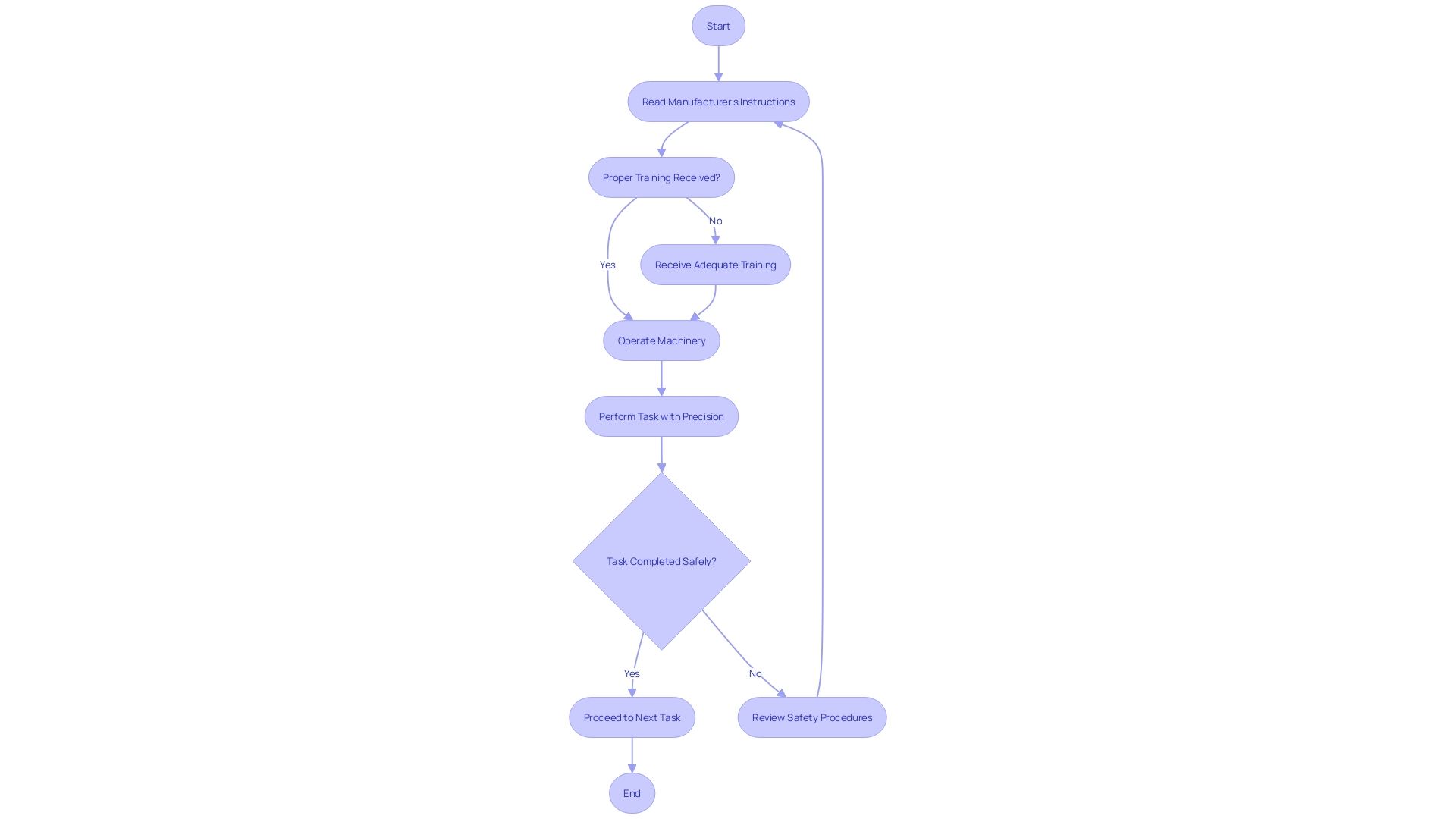
Adapting to Soil Conditions
To improve the effectiveness of excavation activities and safeguard machinery from unwarranted deterioration or harm, it is crucial to customize the utilization of trenching devices to the particular ground conditions encountered. For instance, in softer soils, a reduced digging speed may prevent the equipment from bogging down, while in more compact or harder soils, an increase in power might be necessary to effectively penetrate the ground. Understanding and adapting to the soil's behavior, such as its friction angle which is a measure of its resistance under load, can facilitate better planning and execution of trenching work. This approach not only optimizes the performance of the trench digger but also extends its service life by mitigating undue stress on its components.
Managing Spoil Piles
Effective management of spoil piles is crucial in trenching projects to prevent operational disruptions. A systematic approach to handling this 'back dirt'—excavated material deemed of no archaeological significance—can ensure that the worksite remains clear for ongoing activities. The Archaeological Institute of America defines this material as one that has been sifted for artifacts and is later used for refilling. Yet, as critiqued by scholars like Krupa and Thomas, the importance of this material extends beyond its immediate use, encompassing its contents and potential teachings. The chaos resulting from unstrategized disposal of spoil piles, as observed by Ahmed el-Bedul in Petra, underscores the need for a well-thought-out plan for spoil management. With the construction industry expected to grow by 15% in the next two years, despite economic challenges, maintaining efficiency on-site by minimizing time losses at work stations is essential. This includes the strategic removal and relocation of spoil piles, utilizing practices that align with the Overall Equipment Effectiveness (OEE) index, to ensure high productivity levels and a smooth excavation process.
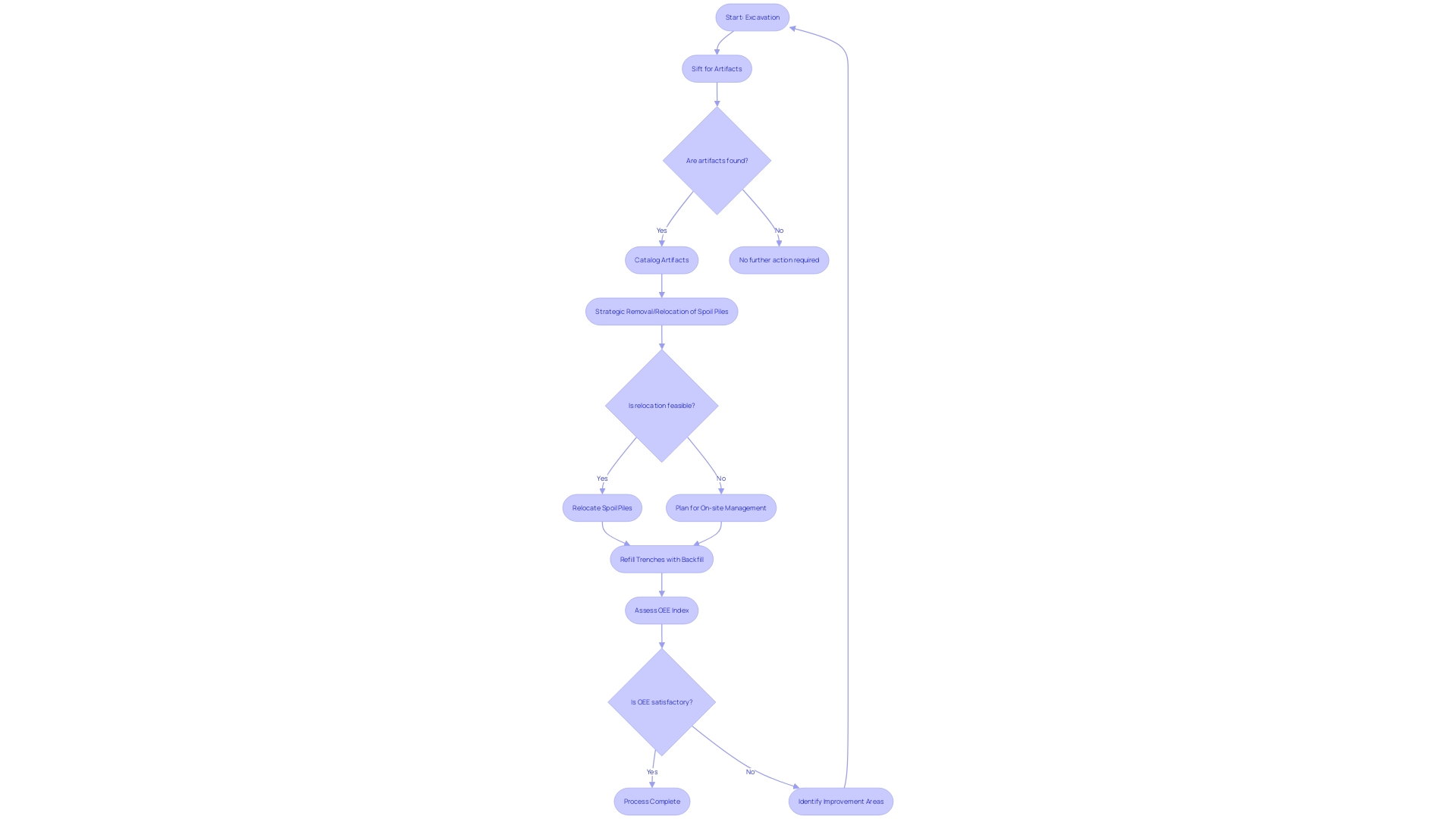
Maintenance and Care for Rented Trenchers
Maintaining and caring for rented trenchers is crucial for ensuring their productivity and longevity. To accomplish this, one must embrace a variety of maintenance practices that are not unlike those used in other industries where machinery wellness is crucial, such as public transit or dairy farming. For instance, just as transit authorities utilize evidence-based guidance to maintain their fleets, trencher operators should follow a set of established maintenance protocols. Regular inspection and adherence to safety guidelines are as vital to trencher upkeep as they are to assessing the health of dairy cows through external indicators like body condition score.
Additionally, the focus on machinery upkeep is evident in the widespread acknowledgement within the industry of the significance of appropriate education and ongoing development. As highlighted by experts, educating oneself on the functions and safety features of heavy machinery is indispensable. Continuous learning ensures that operators are not only adept at using the machinery but are also well-versed in the latest safety protocols and operational techniques.
The rental business market has seen significant growth, partly due to the practical and cost-efficient nature of the model. In line with this trend, renting trenchers offers a cost-effective solution for temporary needs without the hefty investment of purchasing. Efficient maintenance practices contribute to this value proposition by optimizing the performance of the machinery and preventing costly breakdowns.
In summary, the secret to keeping rented trenchers lies in a proactive approach to learning and following a strict maintenance routine, similar to the stringent standards observed in other industries that heavily depend on the operational integrity of their machinery.
Regular Cleaning and Inspection
Maintaining trenchers and ditch diggers is crucial for their optimal performance and longevity. After each use, it is imperative to remove any accumulated dirt, debris, and obstructions. This not only ensures that the machinery is prepared for the next task but also prevents potential malfunctions. Consistent inspections are equally important to spot wear and tear early on, allowing for timely repairs or replacements. This proactive approach to machinery management reflects the industry's broader trend toward preventive maintenance. By prioritizing regular cleaning and inspection, construction managers can avoid the cost and delay of unscheduled machinery downtime—a significant concern given the tight deadlines and budget constraints they often face. This practice aligns with the observations by Glen Crisp, a seasoned industry professional who emphasizes that regular servicing significantly reduces the risk of major faults, echoing the sentiment that clean and well-maintained machinery is foundational to safe and efficient operations. Moreover, the increasing focus on automation and robotics in machinery highlights the necessity for meticulous maintenance. As the industry evolves, with over half of machinery acquisitions being financed and a push for automation, the expertise of machinery manufacturers and dealers in guiding end users through maintenance becomes increasingly valuable. This trend is manifested in the projected 8% yearly expansion in industrial automation, emphasizing the significance of upholding machinery to remain competitive in a rapidly progressing field.
Checking and Refilling Fluid Levels
Trenching machinery, similar to the vital pumps in a brewery, requires diligent monitoring of fluids such as fuel, engine oil, and hydraulic fluid for optimal performance. Similar to the careful attention brewers give to transferring their valuable liquids, construction machinery necessitates regular fluid inspections and refills in accordance with the specifications set by the manufacturer. This practice is not just about maintaining smooth operations; it's a critical strategy for preventing damage to the expensive machinery. For instance, consider the case where insufficient fluid levels led to a pump running dry, resulting in a harrowing, high-pitched scream that no operator ever wants to hear. Such a mistake could result in significant harm to the machinery, resulting in expensive repairs or replacements. Moreover, an incident reported on Sept. 26, where a heavy harrower fell into a water well, underscores the importance of frequent inspections and maintenance to avoid such hazardous situations. Similarly, keeping comprehensive logbooks, as advised by the Compressed Air Challenge, can make a significant difference in managing trenching machinery. These records should include performance metrics like pressure and operational hours, which help in identifying issues before they escalate into significant problems, thus safeguarding the machinery's longevity and operational efficiency. The unfortunate reality of a compressed air auditor discovering blank logbooks at a mineral processing facility serves as a cautionary tale, emphasizing the necessity of diligent record-keeping. In essence, the proactive maintenance of fluid levels in trenching equipment is a cornerstone for ensuring safety, efficiency, and cost-effectiveness on the construction site.
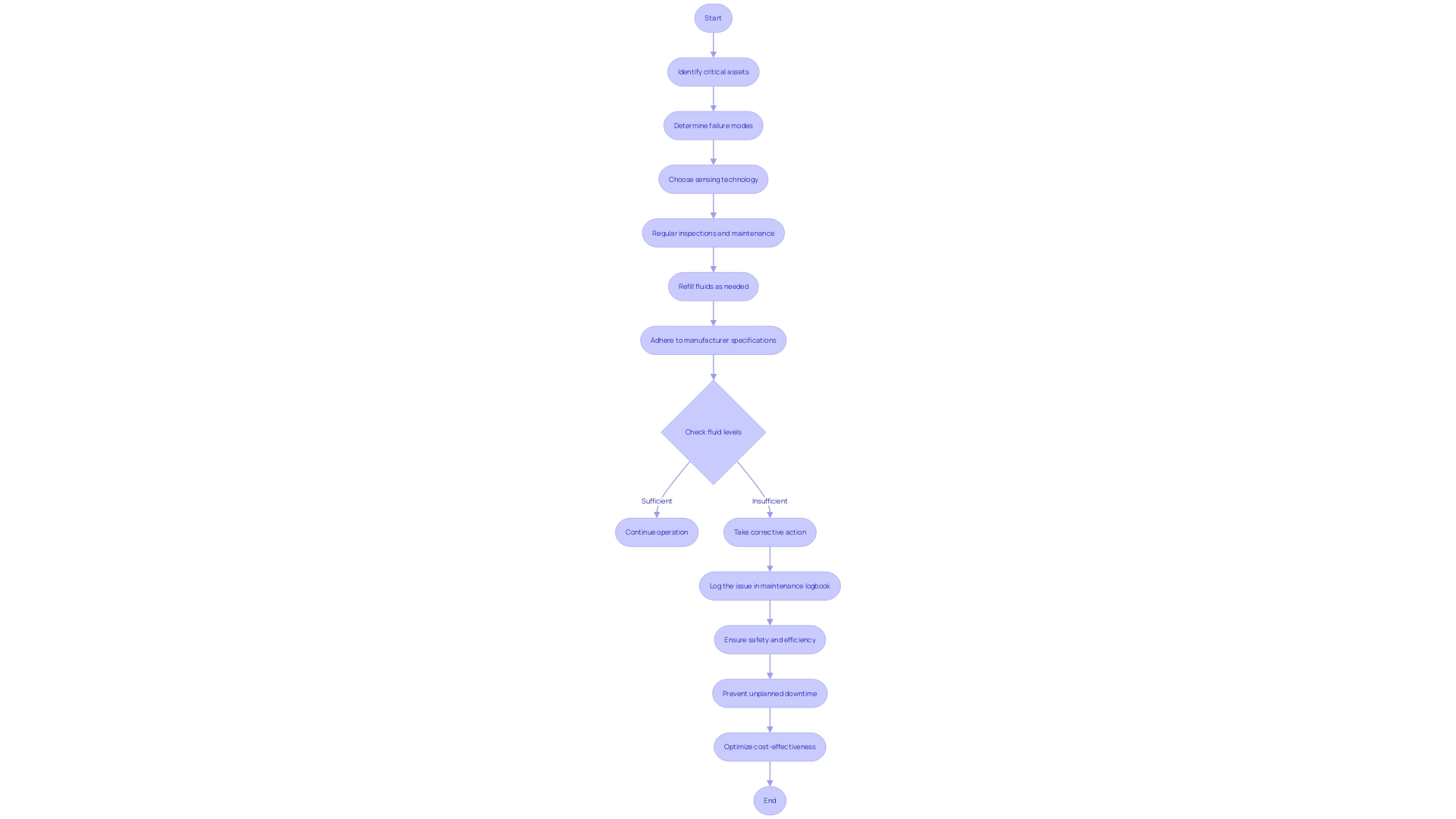
Notifying Rental Providers of Issues
In the event of a malfunction or anomaly with a trench digger you've rented, it's crucial to alert the rental company immediately. They are equipped to offer support or coordinate any necessary maintenance and repairs. This proactive step is key in preventing downtime and maintaining the efficiency of your excavation work. In the realm of rental disputes, the precedent set by the Complaints Committee for the purchase of goods and services underscores the importance of clear communication between the consumer and provider. As seen in recent rulings, the renter should not be held accountable for pre-existing conditions or wear that occurs under normal usage, nor should they endure unexpected financial burdens from undisclosed repair costs. Furthermore, news reports illustrate the significance of transparency and fair practices in rental agreements, as with the case involving a software company's pricing algorithm that led to artificially inflated rents. These instances highlight the critical nature of maintaining open channels of dialogue to resolve any issues swiftly, ensuring that both parties uphold their end of the rental agreement without undue stress on resources or project timelines.
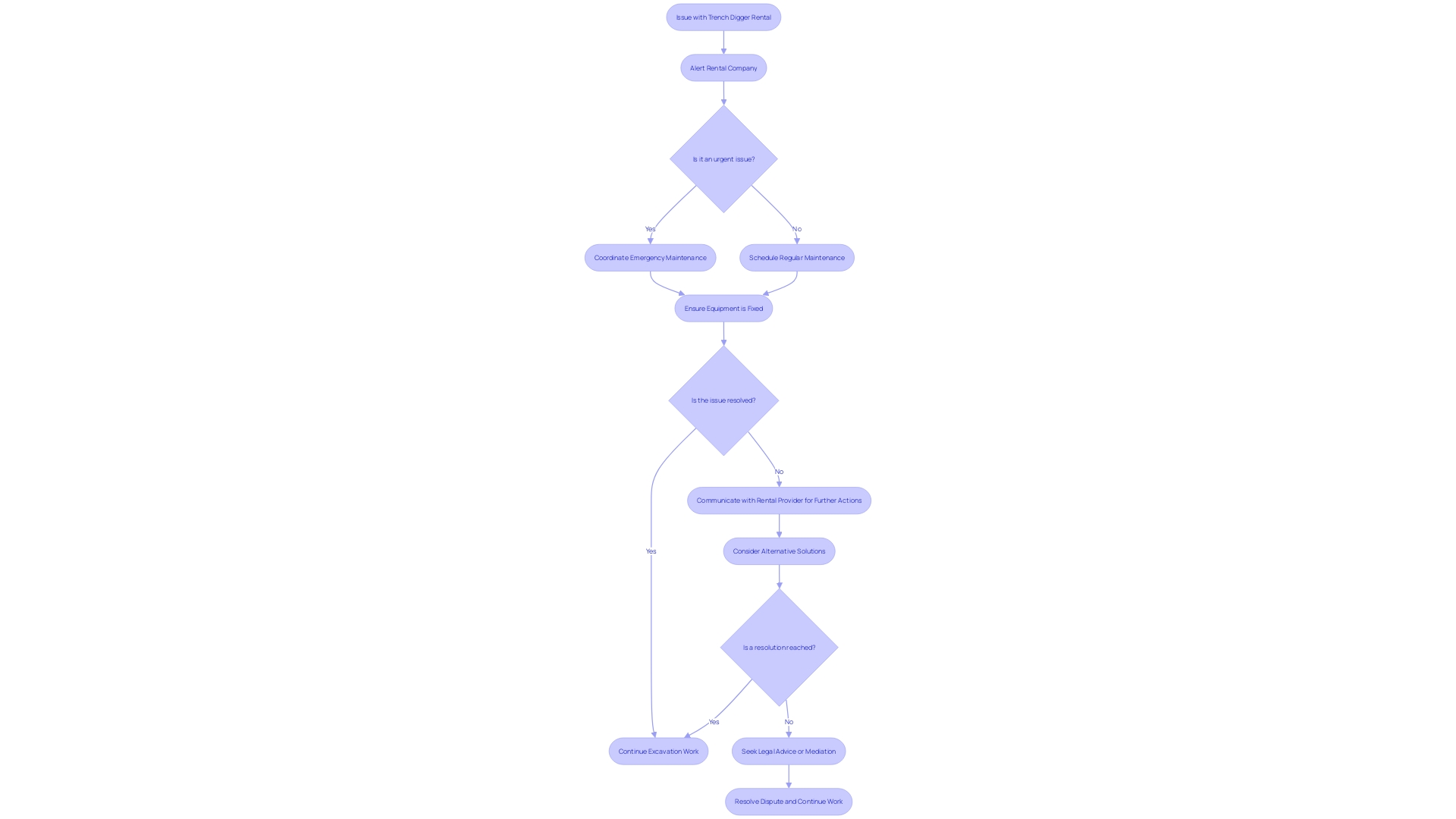
Conclusion
In conclusion, selecting the right trench digger is essential for enhancing productivity and efficiency in excavation projects. Opting for eco-friendly trenchers that align with sustainable practices benefits both the environment and the longevity of the equipment. By comparing different models and considering factors like compatibility with renewable diesel options, long-term value, and rental benefits, you can find the trench digger that best suits your project's needs.
Factors such as project size, soil type, and maneuverability should be taken into account when choosing a trencher. Suppliers also play a significant role in providing support and after-rental services.
Matching the trencher size to the project needs and selecting the right trencher based on trench depth and width are crucial for efficient excavation. Understanding soil conditions and choosing trenchers accordingly can enhance productivity and preserve soil health.
Accurately identifying and locating underground utilities before digging is crucial for worker safety and protecting critical infrastructure. Technological advancements like GPS, GNSS, and ground penetrating radar have improved utility detection accuracy, making excavation projects safer and more reliable.
Meticulous trench path planning and establishing a safe working area are vital for operational efficiency and sustainability. Prioritizing safety, adhering to protocols, and implementing risk mitigation measures contribute to successful excavation outcomes.
Understanding trencher controls, adapting to soil conditions, effective spoil pile management, regular cleaning and inspection, and proper fluid level maintenance are all essential for optimizing trencher performance and ensuring equipment longevity.
Promptly notifying rental providers in case of issues or malfunctions is crucial to prevent downtime and maintain project efficiency. Clear communication and fair practices are key in resolving any disputes swiftly.
By following these guidelines and taking a proactive approach to trench digger selection, operation, and maintenance, construction managers can ensure efficient and safe excavation processes, contributing to successful project outcomes.
Compare different trench digger models and find the one that suits your project's needs




